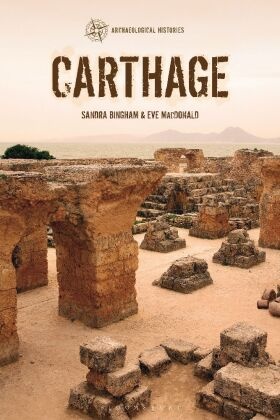| Verlag | Bloomsbury Trade |
| Auflage | 2024 |
| Seiten | 168 |
| Format | 15,7 x 1,0 x 23,5 cm |
| Gewicht | 302 g |
| Artikeltyp | Englisches Buch |
| Reihe | Archaeological Histories |
| EAN | 9781472522764 |
| Bestell-Nr | 47252276UA |
This book traces the formation of the archaeological site of Carthage and how it re-emerged in the minds of European antiquarians and travellers in the early modern world. For almost 1,600 years the ancient city sat on the north coast of Africa, dominating the central Mediterranean until its fall in 698 CE. One of the oldest cities in the Mediterranean, it was founded in legend by the Tyrian queen Dido and destroyed after epic wars with Rome. It was soon reborn as a Roman city, and late in antiquity evolved into a centre for Christian worship. In the 17th and 18th centuries, when European explorers first arrived, searching for the site of Carthage, they were amazed that almost nothing of its former glory remained and lamented its loss. The gradual and sometimes controversial exploration of Carthage has, over the last two centuries, brought the story of this renowned ancient city back into the public imagination. From the first discovery of Punic artifacts to the plunder of the si te for the enrichment of European museums, the book follows the many personalities whose interests and diligence led to the establishment of scientific archaeological excavations and the re-emergence of Carthage from the ruins.
Inhaltsverzeichnis:
List of IllustrationsList of MapsAcknowledgementsIntroduction Chapter 1: From Carthage to Rome: A Brief Overview Chapter 2: From Carthage to Tunis: A New FocusChapter 3: The Europeans Chapter 4: Rivals in the FieldChapter 5: The French CollectorChapter 6: The Excavating Priest Chapter 7: The Tophet, Carthage and the Early Twentieth Century Chapter 8: Independence, UNESCO and the Twenty-First CenturyEpilogue NotesBibliographyIndex
Rezension:
Carthage is an innovative and fascinating cultural history. Besides outlining the Punic, Roman and Christian city and its monuments, this book includes studies on the history of mentalities and archaeological fieldwork at Carthage from the 17th century to recent times. Jesper Carlsen, Professor in Ancient History, University of Southern Denmark, Denmark

